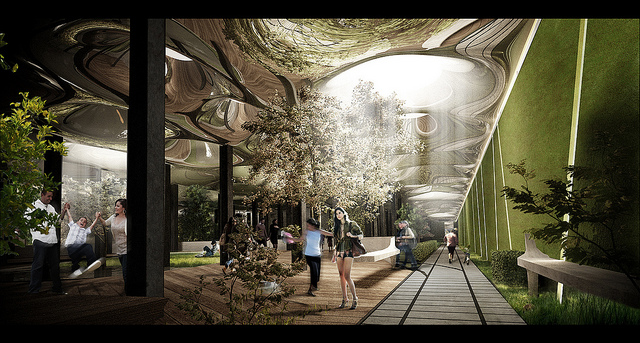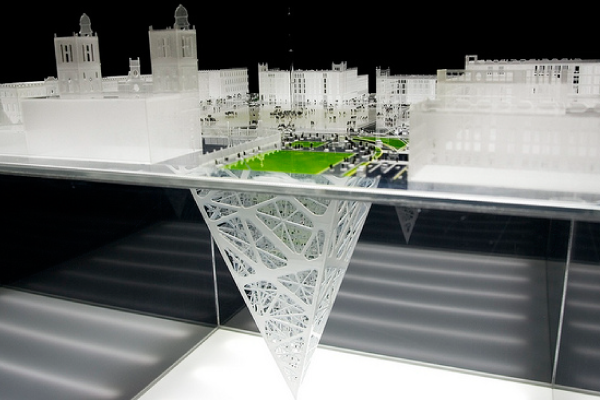![]() 5 minute read
5 minute read
Fighting the land shortage when there is no space left around, requires growth to the sky. However, that is not an only option. The underground expansion becomes disputed topic in developing cities supporting trending forward mixing and layering housing in mixed-use development.
First
underground
master plan
Let’s take a look to the Helsinki, the capital and most populated city in Finland. Due to its geographical location, Helsinki is restricted to spreading by the sea. Thus, urban planners and engineers have found how to use the properties of the ground and developed the first underground master plan in the world. “The Underground Master Plan” allows capital to grow itself beneath the surface. In 2011, the underground space counted 10,000,000 m3 of parking areas, warehouse and industrial facilities, more than 400 premises, 220 km technical tunnels, 24 km raw water tunnels and 60 km utility tunnels. For example, waste water plant is hidden down below far from the citizens eyes. Space beneath the surface is used not only for technical purposes but also for leisure including walkways, shopping malls, sport and kids facilities. The master plan intends to create the subterranean city below the whole capital area which can be easily converted into an emergency shelter if necessary. For instance, the underground swimming pool in Itäkeskus has two floors and can host about 1000 visitors at a time. The shelter capacity of the hall is up to 3,800 people. It might not come as a surprise, but Finnish capital has even underground ice-hockey rink located under Hartwall Arena.
 Photo: Raymond Sterling, 2011
Photo: Raymond Sterling, 2011
From the technical point of view, the underground has benefitting conditions for the Northern climate as well. Eija Kivilaakso, one of the urban designers behind the master plan, says that the conditions underground are often more favourable than on the surface, where the temperature in winter often drops below -20C. Using the features of the underground cooling effect two Finnish companies have reused the old bomb shelter underneath a 19th-century Christian Orthodox cathedral for almost 200 square metres greenest data centre. Moreover, here Finns prove to be the sustainable icon by using the generated heat to warm about 500 homes.
When money
is not an issue
No one argues that the underground expansion need significant investments and suitable ground structure. However, it is not a problem for one of the wealthiest and overcrowded countries like Singapore. The “Science Underground City” will give space to work for 4,200 scientists, researchers and other professionals. The engineers and designers plan to build 40 linked rock caverns, which will be ideal for IT, biotechnology and life sciences R[&]D. Moreover, space under 30 to 80 metres down below will contain soundproof labs and data centres carved out of caves.
“There are real opportunities to develop underground to accommodate density for cities that are already overcrowded or growing,” said Clara Irazábal, assistant professor at the Graduate School of Architecture, Planning and Preservation at Columbia University, New York. “It can expand the efficiency, reduce commuting times and improve a quality of life.”
Clara is right, there are doubts whether people would agree to move to live and work below the surface. Gunnar D Jenssen, who researches underground psychology and space design for a Scandinavian research organisation, has found that there is a way to combat people’s underground fears. “The basic things you have to have there is clean air, you have to have space, it has to be spacious or perceived to be spacious. You can use illusions but the best is if it really is spacious and has good lightning”. Moreover, what can be more natural that a park? The underground cities do not have to be dark and tight.
 Photo credit: RAAD
Photo credit: RAAD
Creative millennial James Ramsey and tech executive Dan Barasch came up with an idea of rebuilding the abandoned trolley station into the green and live first underground park. An innovative plan is to grow trees, flowers and grass beneath the surface using the natural light above. How is it possible? Sending the sunlight to the station through the reflective dishes and transmitting it down fiber-optic tubes allows to grow plants and harvest the solar energy at the same time.
Forget the
skyscrapers
Bunker Arquitectura, a Mexico City-based architecture, urbanism and research office, found the futuristic solution of usage underground space. The 300 metres deep upside down pyramid is designed to be covered with glass ceiling bringing the natural light to the massive in-building. The pyramid construction is to have 65 levels, 10 for housing and 35 for offices, housing up to 5,00 people.
 Photo credit: BNKR Arquitectura
Photo credit: BNKR Arquitectura




